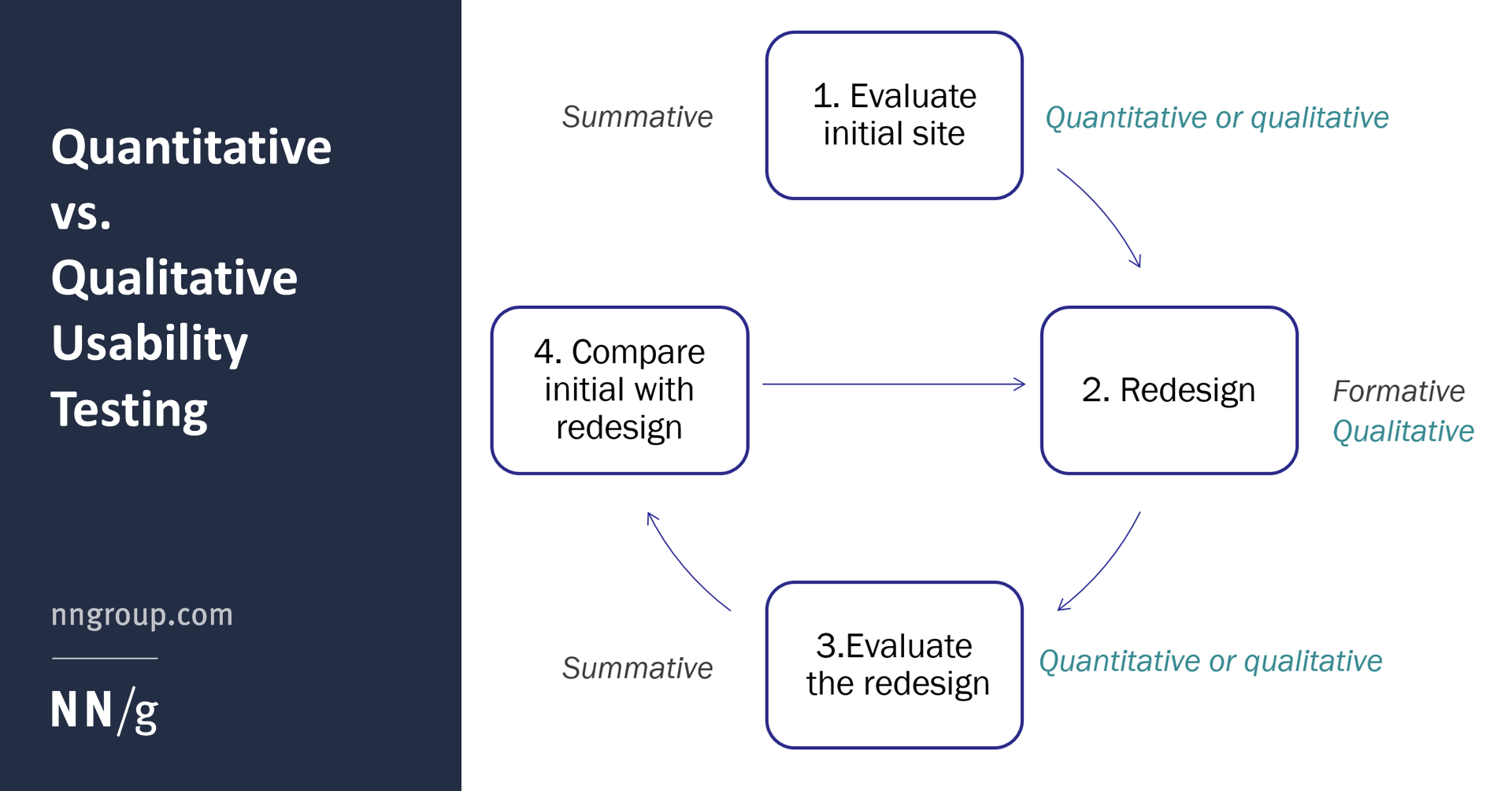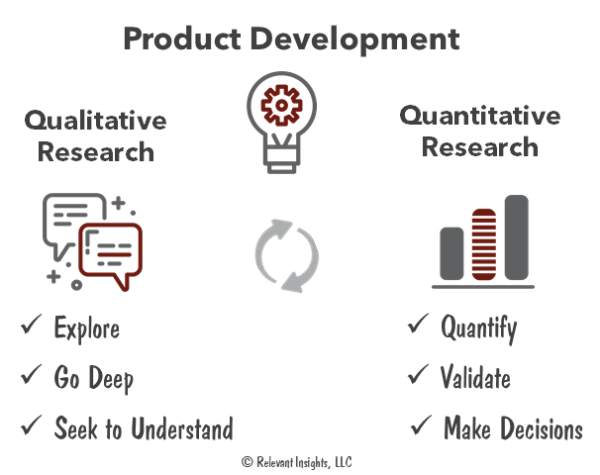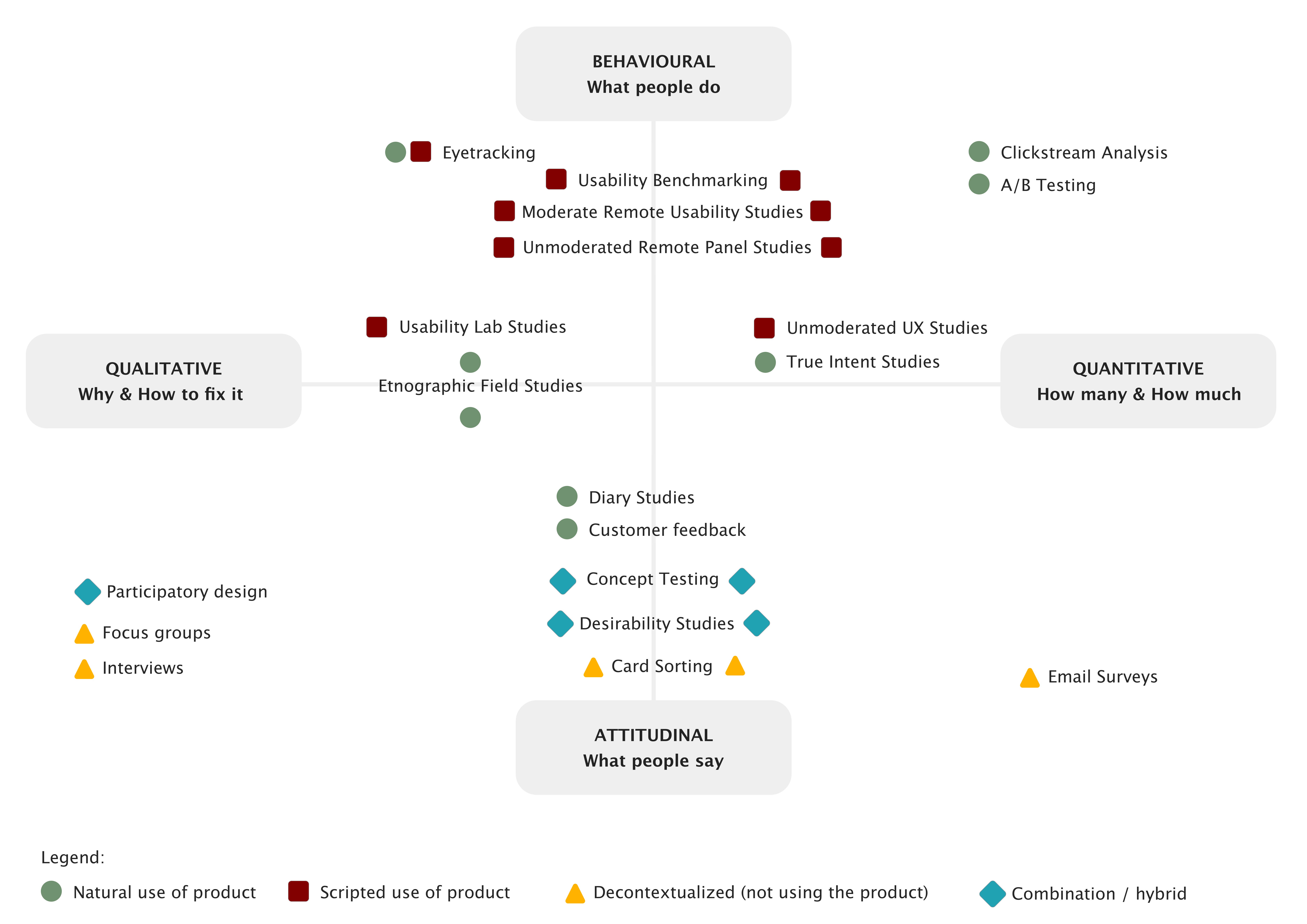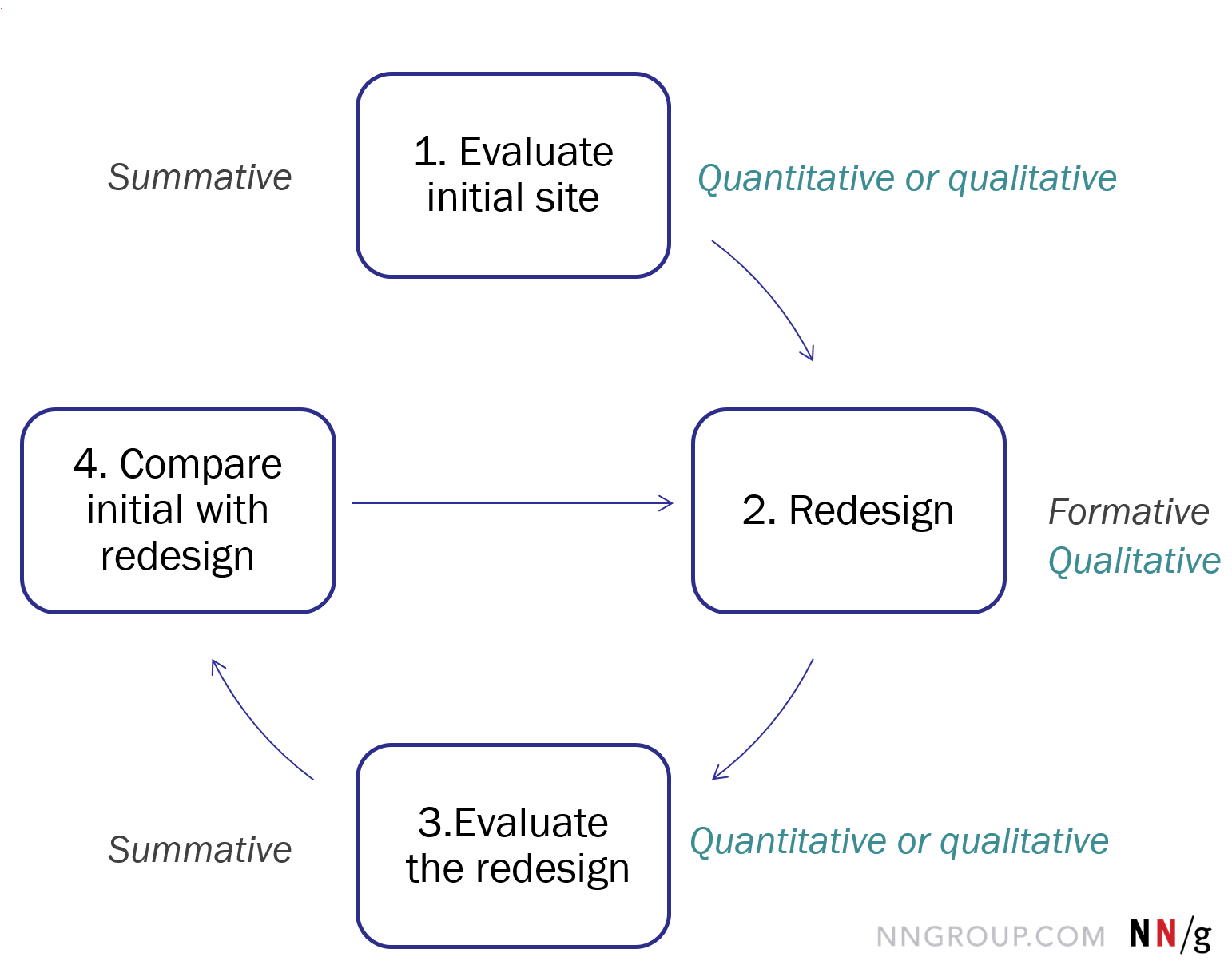User research qualitative vs quantitative
Home » Free Imaging » User research qualitative vs quantitativeUser research qualitative vs quantitative
User Research Qualitative Vs Quantitative. Qualitative data yields an understanding of the motivations thoughts and attitudes of people. It is the kind of research most people think of when they think of the scientific method or traditional lab-type science. Lets start with the numbers. When to use qualitative vs.
 When To Use Which User Experience Research Methods From nngroup.com
When To Use Which User Experience Research Methods From nngroup.com
Whats the difference between qualitative and quantitative user research. In a very general sense quantitative research deals with numbers. What is quantitative UX research. Quantitative research can simplify the decision-making process. It usually involves things like hypotheses test groups an. Quantitative UX ResearchWhats the Difference.
In short quantitative user research is research that yields numerical.
It is the kind of research most people think of when they think of the scientific method or traditional lab-type science. Learn about the key differences and when you should use each type from professor. It usually involves things like hypotheses test groups an. Quantitative research provides a basis for benchmarking programs and ROI calculations. Quantitative data is fixed and universal while qualitative data is subjective and dynamic. When to use qualitative vs.
 Source: blog.mozilla.org
Source: blog.mozilla.org
More about quantitative UX research. Essentially quantitative research gives you hard data while qualitative helps you explore more in-depth ideas. Quantitative UX ResearchWhats the Difference. In a very general sense quantitative research deals with numbers. When to use qualitative vs.
 Source: justinmind.com
Source: justinmind.com
When to use qualitative vs. It usually involves things like hypotheses test groups an. However two people may have very different qualitative accounts of how they experience a particular event. Qualitative and quantitative research helps you gather detailed information on a topic. Whats the difference between qualitative and quantitative user research.
 Source: nngroup.com
Source: nngroup.com
All user research methods can be divided into quantitative and qualitative methods. Learn about the key differences and when you should use each type from professor. All user research methods can be divided into quantitative and qualitative methods. Both these complementary types of user research play important roles in an iterative design cycle. What is quantitative UX research.
 Source: hotjar.com
Source: hotjar.com
Whats the difference between qualitative and quantitative user research. Qualitative research informs the design process. Quantitative research Formulating hypotheses. It is the kind of research most people think of when they think of the scientific method or traditional lab-type science. Qualitative and quantitative research helps you gather detailed information on a topic.
 Source: nngroup.com
Source: nngroup.com
All user research methods can be divided into quantitative and qualitative methods. In a very general sense quantitative research deals with numbers. Quantitative research can simplify the decision-making process. Qualitative research relies on the observation and collection of non-numerical insights such as opinions and motivations. Lets start with the numbers.

Quantitative research Formulating hypotheses. Essentially quantitative research gives you hard data while qualitative helps you explore more in-depth ideas. All user research methods can be divided into quantitative and qualitative methods. In quantitative methods the researcher measures user behavior in a way that can be quantified evaluated according to how many how often or how much questions. Whats the difference between qualitative and quantitative user research.
 Source: relevantinsights.com
Source: relevantinsights.com
What is quantitative UX research. Qualitative research informs the design process. It usually involves things like hypotheses test groups an. Lets start with the numbers. Qualitative and quantitative research helps you gather detailed information on a topic.
 Source: nngroup.com
Source: nngroup.com
Learn about each method of evaluation and when to use them in this topic definition. Quantitative research provides a basis for benchmarking programs and ROI calculations. In a very general sense quantitative research deals with numbers. Qualitative and quantitative research helps you gather detailed information on a topic. Quantitative data is fixed and universal while qualitative data is subjective and dynamic.
 Source: ferpection.com
Source: ferpection.com
In quantitative methods the researcher measures user behavior in a way that can be quantified evaluated according to how many how often or how much questions. It usually involves things like hypotheses test groups an. Quantitative research provides a basis for benchmarking programs and ROI calculations. Qualitative data yields an understanding of the motivations thoughts and attitudes of people. Essentially quantitative research gives you hard data while qualitative helps you explore more in-depth ideas.
 Source: uxdesign.cc
Source: uxdesign.cc
Quantitative research Formulating hypotheses. Whats the difference between qualitative and quantitative research. Lets start with the numbers. Whats the difference between qualitative and quantitative user research. Learn about each method of evaluation and when to use them in this topic definition.
 Source: uxcam.com
Source: uxcam.com
Qualitative research relies on the observation and collection of non-numerical insights such as opinions and motivations. For example if something weighs 20 kilograms that can be considered an objective fact. Quantitative UX ResearchWhats the Difference. Qualitative data yields an understanding of the motivations thoughts and attitudes of people. Qualitative user research includes research methods like user interviews and field studies and helps you collect qualitative data through the direct observation and study of participants.
 Source: daxueconsulting.com
Source: daxueconsulting.com
In short quantitative user research is research that yields numerical. When to use qualitative vs. Whats the difference between qualitative and quantitative user research. Lets start with the numbers. It usually involves things like hypotheses test groups an.
 Source: nngroup.com
Source: nngroup.com
Essentially quantitative research gives you hard data while qualitative helps you explore more in-depth ideas. Qualitative research relies on the observation and collection of non-numerical insights such as opinions and motivations. Both these complementary types of user research play important roles in an iterative design cycle. When to use qualitative vs. More about quantitative UX research.
 Source: uxknowledgebase.com
Source: uxknowledgebase.com
Whats the difference between qualitative and quantitative user research. Qualitative user research includes research methods like user interviews and field studies and helps you collect qualitative data through the direct observation and study of participants. For digital marketers a common quantitative source is Google Analytics. Sometimes what you really need is objective information to. Learn about each method of evaluation and when to use them in this topic definition.
 Source: nngroup.com
Source: nngroup.com
Qualitative user research includes research methods like user interviews and field studies and helps you collect qualitative data through the direct observation and study of participants. Qualitative research informs the design process. In short quantitative user research is research that yields numerical. Quantitative research provides a basis for benchmarking programs and ROI calculations. Both these complementary types of user research play important roles in an iterative design cycle.
If you find this site helpful, please support us by sharing this posts to your favorite social media accounts like Facebook, Instagram and so on or you can also bookmark this blog page with the title user research qualitative vs quantitative by using Ctrl + D for devices a laptop with a Windows operating system or Command + D for laptops with an Apple operating system. If you use a smartphone, you can also use the drawer menu of the browser you are using. Whether it’s a Windows, Mac, iOS or Android operating system, you will still be able to bookmark this website.
